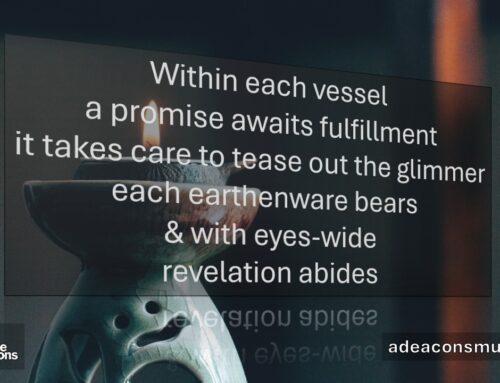I am most fortunate in the ministry in which I find myself. A significant portion of my role falls under the umbrella of leadership. Though that may seem like a broad-stroke, maybe even ambiguous, description, what it means to me is that I get to think about, reflect upon, engage in wonderful conversations and imagine practical ways to nurture great leadership in the church!
Connected – and just as importantly – I play with tangible ways that leadership links the church to the future. What, therefore, may we need to consider as the church imagines its place in society 10, 20 years from now and beyond? Just as fortunately, I recently had one of those great conversations … which of course got me to musing … Thus, the next few blogs about leadership & the church will explore the following:
Evangelism: The 21st Century
Social media: we hear a lot about it now. Often, from the church context, discussions about social media are not affirming. Such discussions tend to focus on the political (i.e. Fake News) and frequently highlights the Inside/Outside tension. Though a large gloss, for those raised and formed inside the church, at the worst the digital milieu is disparaged and – at the best – is seen as a tool to fish for those who do not come inside.
Interestingly, the inside/outside divide is reflected in the current geopolitical challenges western democracies are confronting. In many cases, the rise in populism is often a mirror of the inside/outside generational divide. Often those on the outside are generationally (and frequently Millennials are referenced to in traditional media) those who reject the conservative trend to embrace a populist orientation. Though some Late Baby Boomers and Gen X may resist populism, Millennials and Gen Z are more likely to walk away from the halls (of power and influence) owing to multiple reasons that range from cynicism to apathy.
Regardless of how those inside understand the digital divide, for those outside it is their relational space. Social media is not just a bulletin board for information. It is one significant way in which relationships are explored, nurtured and celebrated. While the insiders might not be able to see it, the digital environment has revolutionised the way creativity, finance and business unfold. Whether that's Uber, Creative Commons or open-source technology, in which people 'hive-mind-create,' there's an amazing revolution occurring that often those inside are unable to see.
For those outside, however, having abandoned/left/never been inside, there is a well articulated longing for what the church calls 'spirituality.' Ways of practice that deepen a sense of oneness. The challenge is that often the church is not in the game, on the field, or walking the path. In this vacuum, spirituality (often explored without practice or discipline) can be packaged as simply another consumer product, at best. At worst, it creates an opportunity to weaponize a human being. The church has long understood itself as corporately bearing light and sharing the Good News of blessing and hope: in other words, evangelising. Social media, therefore, presents the church with an opportunity to evangelise in a new way.
How the church evangelises when inside and outside are no longer the same becomes a central question about leadership. How do we begin to offer the Good News in ways that can be heard and which do not perpetuate how we used to do things and challenges the growing divisions? How do we offer the Good News and not reinforce assumptions that those outside see us as judgemental, exclusive and intent on converting and colonising? To answer that, we will need to further explore the following in these leadership musings:







Your reflections are most welcome!